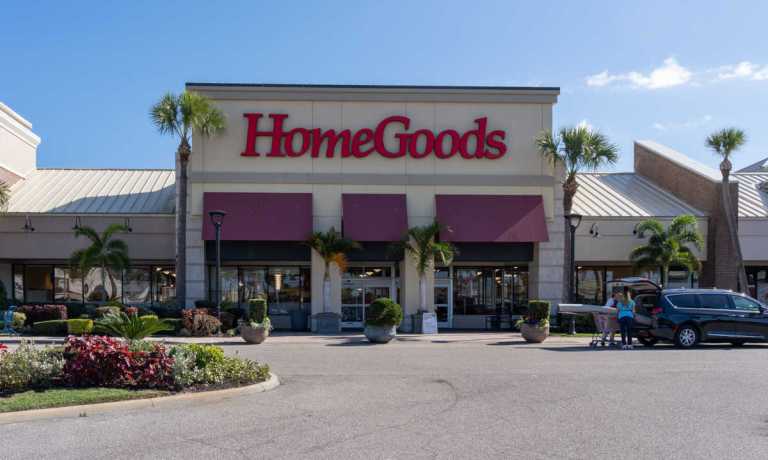HomeGoods Turns off Online Lights to Brighten in-Store Experience

The decision to shut down an online business to prioritize a brick-and-mortar retail strategy might seem counterintuitive.
However, there are instances where this move could make perfect sense, driven by factors like inflation and the sensory experience offered by physical stores.
HomeGoods announced Wednesday (Oct. 18) that it would be closing its online store just two years after venturing into the eCommerce arena. TJX Companies, the parent company of the discount furnishing store chain, informed its customers of the abrupt change via email.
“We’ve made the decision to focus our resources on our brick-and-mortar stores,” the message read, in part, adding that the brand would be announcing “many new store openings” in the coming weeks.
HomeGoods elaborated in the email that the decision to shut down its online store, introduced in September 2021, was aimed at enhancing the in-store experience for its customers. In its physical locations, the brand maintains an array of discount products.
The last day to shop online is Saturday (Oct. 21), according to the email.
Why HomeGoods Is Closing Its eCommerce Business
A spokesperson for the brand previously indicated that online shopping was not significantly driving the company’s growth.
“As to eCommerce, overall, it remains a very small percentage of our business,” TJX Chief Financial Officer John Joseph Klinger said on an August earnings call, per Business Insider. “We continue to add new merchandise to our sites so that shoppers can see something new every time they visit.”
A customer service representative from TJX verified the closure of the online store, emphasizing that it would exclusively impact the HomeGoods website. The spokesperson went on to confirm that as of Oct. 21, customers would still have the option to use their HomeGoods gift cards and merchandise credit at a range of other TJX-owned stores and websites, including TJ Maxx, Marshalls, Homesense and Sierra.
The Bargain Sensory Experience
Brick-and-mortar retail offers an experiential journey that online stores can’t replicate. This is especially true when it comes to bargain goods as shoppers seek to physically interact with products, examine their quality, and experience the thrill of finding hidden gems or unique items.
HomeGoods, known for its ever-changing inventory, creates a treasure hunt-like atmosphere, where customers can enjoy the tactile exploration of items on the shelves. The sensation of finding a one-of-a-kind piece at a discount price can be a satisfying experience, which online shopping often lacks.
The sensory experience also extends to the tactile and visual aspects of shopping. Customers can touch and feel fabrics, smell scented candles or see the colors of items, making physical stores more appealing. For bargain goods, it’s even more critical, as the allure of quality at an affordable price hinges on the ability to physically inspect the merchandise.
Focusing Where Customers Engage and Are Loyal
Shifting focus from online to retail can also help build stronger customer relationships. Physical stores allow for face-to-face interactions, personal assistance and an ambiance that fosters customer engagement. Shoppers often return to stores where they feel a connection or have had a memorable experience.
Companies such as HomeGoods might view the choice to shutter their online outlets as a chance to forge enduring and devoted customer connections. Constructing a brand centered on an immersive sensory experience has the potential to generate positive word-of-mouth marketing and heightened customer loyalty. This, in the long run, can help mitigate a possible decline in online sales.
Others Who Have Chosen to Focus on Physical Retail
HomeGoods isn’t the only company to shut down its online experience. In 2020, Burlington closed its eCommerce site to focus on brick-and-mortar stores.
“In our business, which is a moderate off-price business, the nature of the treasure hunt and the average price point that we operate at mean that brick-and-mortar stores have a significant competitive and economic advantage over eCommerce,” said CEO Michael O’Sullivan on a company earnings call in March 2020.
At the time, Burlington had announced that its new stores would be smaller. The company aimed to open 80 new stores in fiscal year 2020, with an average size of 39,700 square feet, marking the first instance when the average size was less than 40,000 square feet.
Ross Stores, on the other hand, never bothered to make the online venture. In 2020, around the time the news broke about Burlington, the discount retailer opened 19 Ross Dress for Less outlets and seven dd’s DISCOUNTS stores in nine states. The new stores were a component of the company’s strategy to incorporate 100 new locations, comprising 75 Ross and 25 dd’s DISCOUNTS stores, during fiscal year 2020.
For all PYMNTS retail coverage, subscribe to the daily Retail Newsletter.